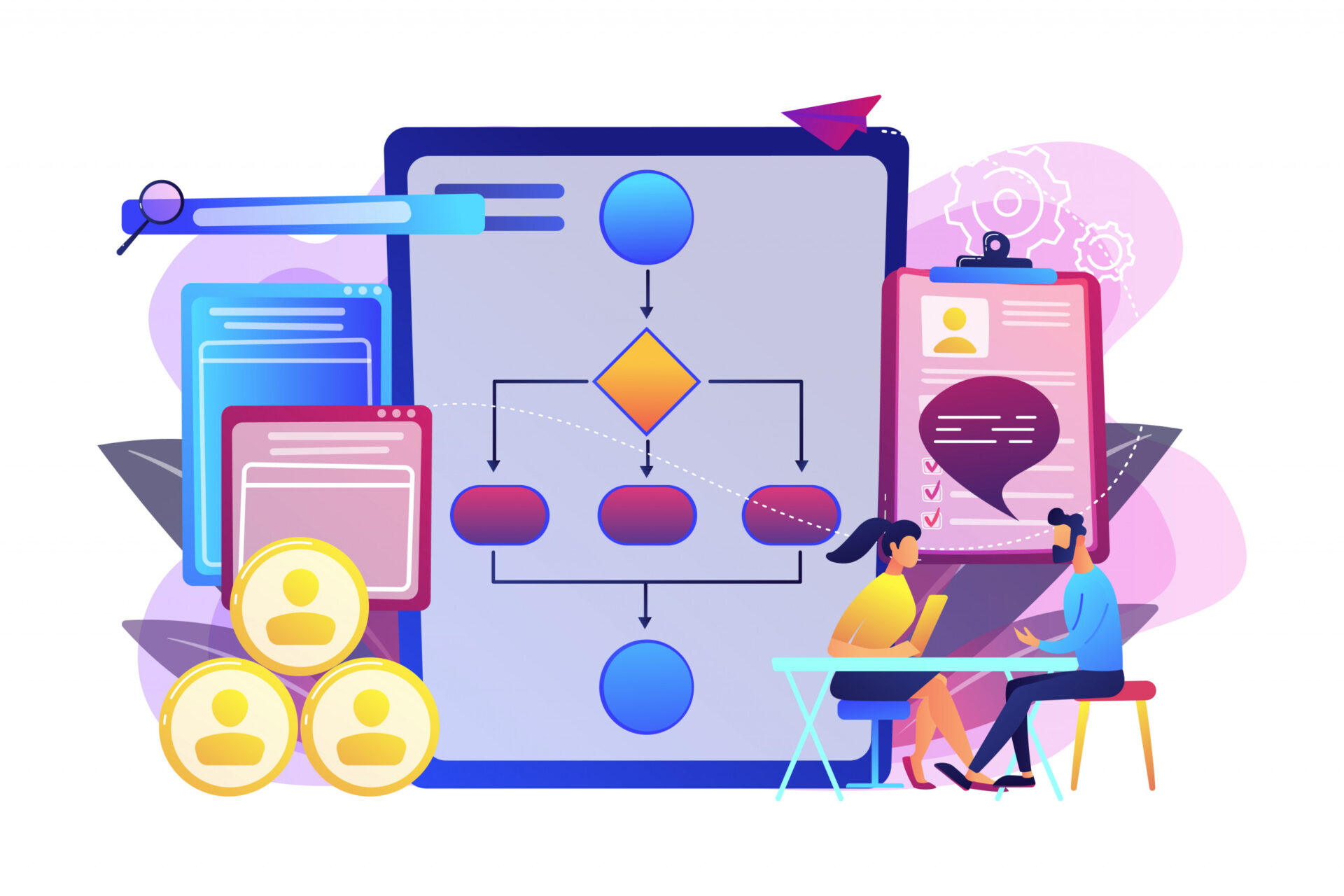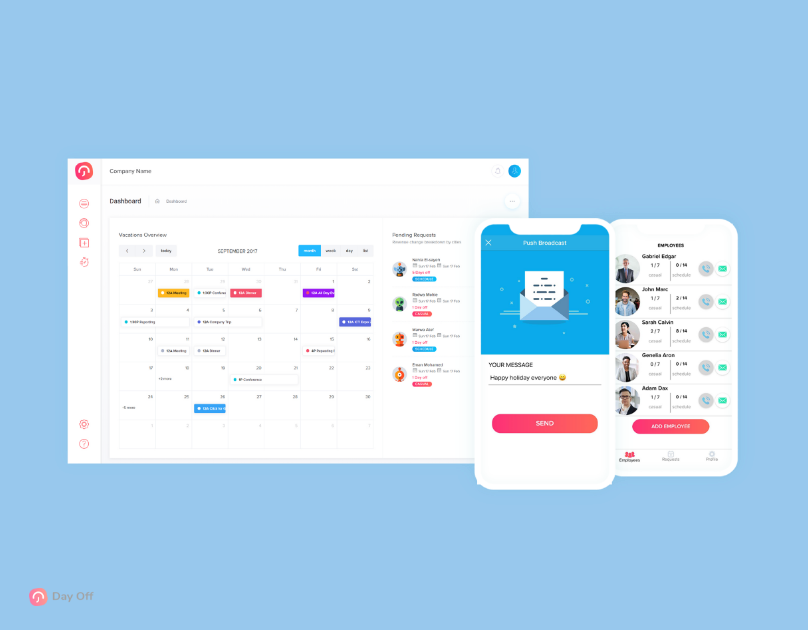Employee engagement is one of the clearest signals of organizational health. When people are energized by the mission, clear on priorities, equipped to do great work, and treated fairly, performance rises across the board, productivity improves, customers feel the difference, and turnover drops. This guide replaces scattered tips and bullet lists with deeper, practical guidance you can adapt to your company right away.
What Employee Engagement Really Means
Engagement isn’t a perk or a once-a-year survey score. It’s a sustained state in which employees understand how their work connects to the mission, believe their contributions matter, and have the resources and autonomy to deliver at a high standard. When those conditions are present, people bring discretionary effort: they solve the extra problem, help a teammate, or refine a process without being asked. Your job as a leader is to design the environment that makes those behaviors the default.
Why Engagement Matters to the Business
Highly engaged teams outperform because they waste less energy on ambiguity and friction. They know what “good” looks like, can see the customer at the end of the workflow, and trust that their time is used well. That combination shows up in hard numbers, quality, speed, revenue per employee, and in leading indicators such as time-to-ramp, internal mobility, and customer satisfaction. In periods of change, engaged teams also adapt faster because they have context and psychological safety to experiment.
The Foundations: Purpose, Clarity, Enablement, Growth, Recognition, Belonging, Well-Being
A durable engagement strategy rests on seven foundations:
- Purpose. People do their best work when they see why the company exists and how their role advances that mission. Don’t assume purpose is self-evident. Translate company strategy into team-level narratives and individual goals so every contributor can finish the sentence, “When I do X, it helps the company achieve Y.”
- Clarity. Clarity removes hidden obstacles. Set a small number of measurable goals, define what “excellent” looks like with examples, and make decision rights explicit. When trade-offs appear, explain the “why behind the why” so teams can make aligned choices without waiting for sign-off.
- Enablement. Engagement collapses if people lack tools, information, or authority. Treat enablement like a product: ask what slows work down, fix the biggest friction first (access, equipment, documentation), and follow up to confirm the fix worked. Enablement is also cultural, grant reasonable autonomy, and back people when they use it.
- Growth. Progress fuels commitment. Offer visible paths to learn and advance: project rotations, mentoring, and targeted training in problem solving, communication, and cross-functional collaboration. Tie learning to real business outcomes so it feels consequential, not extracurricular.
- Employee Recognition. People repeat what gets noticed. Replace generic praise with specific acknowledgment of behavior and impact: what the person did, how it helped the customer or team, and which value it demonstrated. Public recognition teaches the whole organization what “right” looks like.
- Belonging. Inclusion and fairness are not slogans; they show up in who speaks, who gets stretch work, and how decisions are made. Invite perspectives early, share context widely, and ensure processes (promotions, performance, compensation) are transparent and consistently applied.
- Well-Being. Sustainable pace and real recovery are engagement multipliers. Back this with policy and tooling, flexible work norms, thoughtful workload planning, and effective employee leave management so taking time off is easy, equitable, and respected.
Culture in Action: How to Maintain Engagement and Happiness
Create a No-Blame Performance Culture
Move from fault-finding to learning. When something goes wrong, run a brief, structured debrief: what did we expect, what happened, what did we learn, and what will we change? Leaders go first by owning their misses. Over time, people volunteer risks earlier, ask for help sooner, and treat problems as shared puzzles rather than personal failures.
Resource People Like Professionals
Ask a simple question regularly: “Do you have what you need to do your best work?” Then act quickly on the answers. Close access gaps, standardize tools, publish up-to-date playbooks, and remove unnecessary approvals. When employees see blockers resolved fast, they conclude their effort won’t be squandered and they lean in.
Communicate to Align, Not to Announce
Replace one-way updates with context-rich conversations. Explain the goal, the trade-offs you considered, and how success will be measured. Establish a predictable operating rhythm, weekly priorities, monthly business reviews, and quarterly planning, so people know when and where to raise risks or propose ideas. Alignment is a practice, not an event.
Know Your People Beyond Their Job Titles
Engagement deepens when managers understand strengths, ambitions, and working preferences. Use 1:1s to explore what energizes each person and what drains them. Assign work that stretches strengths, pair complementary teammates, and make expectations explicit. When people feel seen and deployed wisely, performance and loyalty rise together.
Train for the Behaviors That Change Outcomes
Focus learning on capabilities that improve day-to-day execution: analytical thinking, customer empathy, feedback and coaching, conflict resolution, and decision-making under uncertainty. Blend formal courses with hands-on practice, shadowing calls, running small experiments, and facilitating retros. Make progression visible so learning feels like momentum, not homework.
Build Real Feedback Loops
Survey lightly and often to spot trends, then close the loop publicly: what you heard, what you’ll do, and when. Encourage upward feedback by having leaders ask specific questions (“What should I do more of? Less of?”) and respond with action. When employees see input change the environment, they keep engaging.
Shape the Daily Environment With Intention
Rituals and stories teach culture. Keep the ones that reinforce your values, demo days, customer story share-outs, peer recognition, and redesign those that don’t. Examine how meetings run, how decisions are documented, and how information flows. Small, consistent signals accumulate into a workplace that people are proud to be part of.
Reward What You Want to See More Of
Tie recognition and rewards to behaviors that create value: planning for handoffs before PTO, jumping in to serve a customer, mentoring a new hire, reducing risk through candid reporting. Mix public praise, growth opportunities, and financial rewards so that different motivations are honored. Be explicit about criteria to preserve trust.
Make It a System, Not a Slogan
Document how engagement happens at your company, cadences, owners, measures, and inspect it like any critical process. When priorities shift or teams grow, revisit the system. Consistency signals seriousness; people invest when they believe the effort will endure.
Well-Being and Time Off That People Actually Use
Policies are only as good as the lived experience. Use modern employee leave management to make requesting and approving time off straightforward, with visible balances, clear rules, and calendar syncing so coverage is planned, not improvised. Normalize rest by having leaders take leave and communicate handovers. Pair time-off access with realistic workload planning so employees return to sanity, not a “vacation tax.”
Measuring What Matters (Without Reducing People to Numbers)
Measurement should illuminate, not intimidate. Combine sentiment data (pulse scores, eNPS, open-text themes) with behavioral and business signals (internal mobility, regretted attrition, cycle times, customer metrics). Look for patterns by team and manager to target support where it will matter most. Publish a short, comprehensible dashboard and discuss it in regular reviews so insights become action rather than trivia.
The Manager Habits That Multiply Engagement
Great managers create clarity, remove friction, and develop people. In practice, that looks like reliable 1:1s focused on coaching instead of status; crisp expectations with examples of quality; fast, specific feedback delivered with care; and visible advocacy for their team’s needs. These habits compound. When employees trust that their manager will support them and tell them the truth, they take smart risks and grow.
Choosing Technology That Helps (Not Hinders)
Pick a light, integrated stack so signals flow and work stays visible. Your HRIS or HRMS should be the source of truth; an engagement platform should make it easy to listen and act; performance tools should align goals and feedback with day-to-day work; recognition should live where people already communicate; and leave/PTO should integrate with calendars and payroll. Fewer, better-connected tools reduce double entry, errors, and frustration.
Avoiding Common Pitfalls
Engagement efforts fail for predictable reasons: leaders behaving inconsistently with stated values; one-off campaigns without follow-through; vague, inflated praise that teaches nothing; collecting feedback without acting on it; and overlooking manager capability. The fix is equally predictable: align behavior with words, commit to a cadence you can sustain, recognize with specificity, close the loop on feedback, and invest first in managers.
A Practical 90-Day Starter Plan
Begin with listening, then move to focused action, then reinforce. In the first month, run a short pulse survey and a handful of listening sessions; fix one or two obvious friction points to show you’re serious. In the second month, publish three to five commitments with owners and dates, train managers on feedback and recognition, and roll out a simple operating rhythm for goals and reviews. In the third month, launch a visible recognition cadence, normalize time off with clear employee leave management guidelines, share progress against commitments, and adjust based on what you learn. By the end of ninety days, you’ll have momentum and a playbook worth iterating.
Frequently Asked Questions
What Is Employee Engagement?
Employee engagement is the sustained connection employees feel to the mission, their team, and their work. Engaged people understand how their role creates value, have the resources and autonomy to do great work, and believe their effort is recognized fairly. It shows up as discretionary effort, solving the extra problem, helping a teammate, improving a process, without being asked.
How Is Engagement Different From Satisfaction Or Happiness?
Satisfaction is “I’m content,” while engagement is “I’m committed and contributing at my best.” Perks can lift satisfaction briefly, but engagement comes from purpose, clarity, enablement, growth, recognition, belonging, and well-being. When those conditions exist consistently, morale and performance rise together.
Why Does Engagement Matter For Business Outcomes?
Engaged teams waste less energy on ambiguity and rework. They move faster, deliver higher quality, retain customers better, and churn less. That translates into measurable gains in productivity, revenue per employee, and resilience during change.
How Do We Measure Engagement Without Over-Surveying?
Use short pulse surveys monthly and a deeper assessment once or twice a year, then pair the results with behavioral signals like internal mobility, regretted attrition, goal attainment, and customer metrics. The key is closing the loop: share what you heard, what you’ll change, and when. Measurement should drive action, not dashboards for their own sake.
What Are The Fastest Levers To Improve Engagement?
Remove friction first: fix access issues, clarify priorities, and provide the tools people actually need. Raise management quality through better 1:1s, clear expectations, and timely feedback. Make recognition specific and frequent so people see what “good” looks like and feel valued for delivering it.
How Should Managers Run 1:1s To Boost Engagement?
Treat 1:1s as coaching, not status. Align on outcomes, discuss what’s helping or hindering progress, and agree on one concrete improvement for the week. Ask questions like “What should I do more of or less of?” to invite upward feedback and strengthen trust.
How Do We Support Well-Being And Prevent Burnout?
Plan workloads realistically, protect focus time, and normalize recovery. Use employee leave management to make requesting and approving time off simple and fair, with visible balances and clear rules. Leaders should model healthy behavior by taking leave themselves and providing clean handovers so time off isn’t punished with a backlog.
How Does Employee Leave Management Influence Engagement?
Transparent, reliable leave processes signal respect and fairness. When balances, accruals, and approvals are automated, and time off syncs to calendars and payroll, employees plan confidently and managers staff proactively. The result is less burnout, fewer coverage surprises, and higher trust.
What Role Do Recognition And Rewards Play?
People repeat what’s recognized. Move beyond “great job” and name the behavior, its impact, and the value it demonstrates. Blend public praise, growth opportunities, and financial rewards so that different motivations are honored, and keep the criteria transparent to preserve credibility.
How Do We Keep Remote Or Hybrid Teams Engaged?
Over-communicate context, not just tasks. Establish clear norms for availability, documentation, decision-making, and handoffs across time zones. Create deliberate touchpoints for connection, regular demos, peer learning, and informal check-ins, so relationships grow even when calendars don’t overlap.
Which Tools Actually Help, And How Should They Integrate?
Choose a light, integrated stack: an HRIS/HRMS as the people source of truth, an engagement platform for listening and action tracking, performance tools for goals and feedback, recognition that lives in your chat app, and leave/PTO that integrates with calendars and payroll. Fewer, well-connected tools reduce duplicate entry and make signals easier to act on.
How Do We Prove ROI To Leadership?
Set a baseline, then track changes in cycle times, quality, customer metrics, regretted attrition, internal mobility, and engagement scores. Attribute improvements to specific interventions, manager training, recognition cadence, enablement fixes, leave policy updates, and review results in monthly business reviews. When engagement becomes a disciplined system, performance gains are visible and defensible.
Conclusion
Enduring engagement doesn’t happen by accident, it’s designed. Tie everyday work to a clear purpose, remove friction so people can do their best, invest in growth, recognize outcomes and behaviors fairly, build true inclusion, and back it all with real well-being (including thoughtful employee leave management that people actually use). Then run that system with the same rigor you bring to product or finance: set goals, instrument it, learn from the data, and keep iterating.
When leaders model the culture, managers coach with clarity, and tools stay out of the way, employees bring energy and ownership to the work. Do this consistently and you’ll see the shift: faster execution, stronger retention, happier customers. Design it on purpose, run it with discipline, and your results will make the case.











